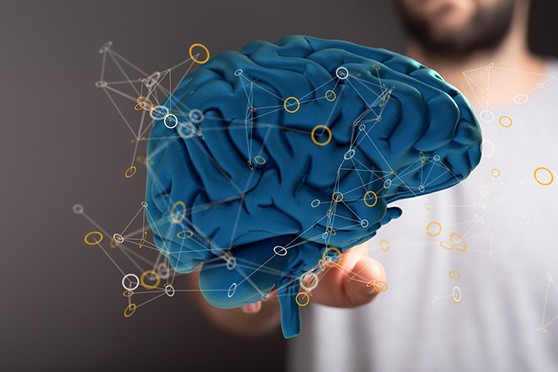Indian, US scholars develop mathematical simulation to aid neurorehabilitation


Scholars at the Indian Institute of Technology (IIT) Mandi, along with their counterparts in the National Brain Research Centre in Gurugram and the University at Buffalo in the USA, have developed a mathematical simulation to study non-invasive brain stimulation techniques that can help plan patient-specific neurorehabilitation measures for stroke, post traumatic brain injury and even mild to major psychiatric disorders.
“Our study can help neuro-specialists plan patient-specific restorative neurorehabilitation activities for stroke, post traumatic brain injury, mild cognitive impairment, dementia and other neuropsychiatric disorders,” said Shubhajit Roy Chowdhury, associate professor, School of Computing and Electrical Engineering, IIT Mandi.
The results of the recent work of the research team have been published as an abstract in the popular journal, Brain Stimulation. The abstract has been co-authored by Shubhajit Roy Chowdhury from IIT Mandi, Yashika Arora from National Brain Research Centre, and Anirban Dutta of University at Buffalo.
“Such a mathematical-model-based quantitative analysis would help in individualised therapeutic protocols for neuropsychiatric disorders. The team has planned experimental studies that involve blocking of various pathways to validate their modelling results,” said Chowdhury, the lead researcher in the project.
Chowdhury said that the team simulated a physiologically-detailed mathematical model of the neurovascular unit (NVU) with four compartments. The compartments are synaptic space, astrocyte space, perivascular space, and arteriole smooth muscle cell space called NeuroVascular Units or NVU, he added.
Transcranial electrical stimulation (tES) is a non-invasive brain stimulation method that makes an electrical current flow through parts of the brain to study or alter brain functions. Soon after electricity was discovered in the 18th century, portable electrostimulation devices were developed for treating various neurological syndromes like headaches.
Nowadays, a number of electrodes are put on the scalp of the patient, and electric waves are passed between the electrodes through the soft tissue and skull. Part of the current penetrates into the brain and makes the nerves to alter activities. Beyond being explored as a curative, tES has proved to be useful for mapping the functions of the brain for understanding the relationship between the brain part and behaviours of the subject, Chowdhury said.
However, the use of electricity on the brain can be dangerous if the outcome is unknown, say researchers. The response of multiple blood vessels in the cranium and various neurological pathways to tES must be understood properly to churn out the maximum benefits of the procedure with minimum damage. This is where non-invasive brain stimulation helps.